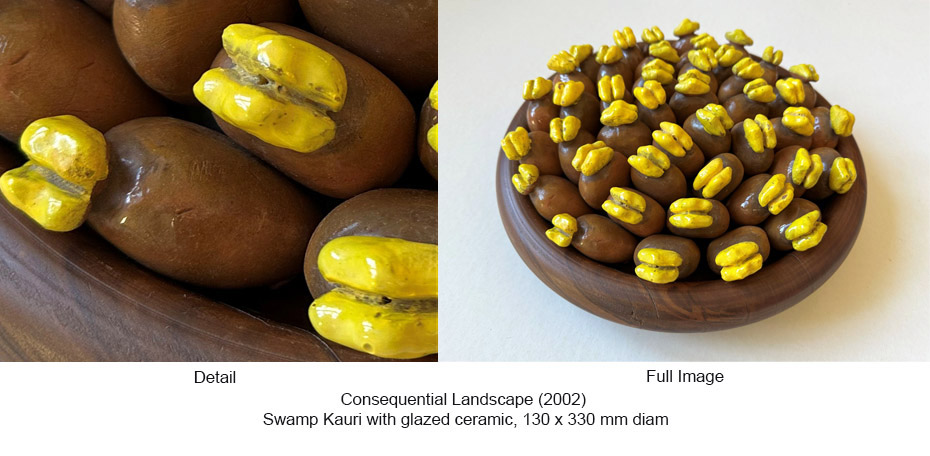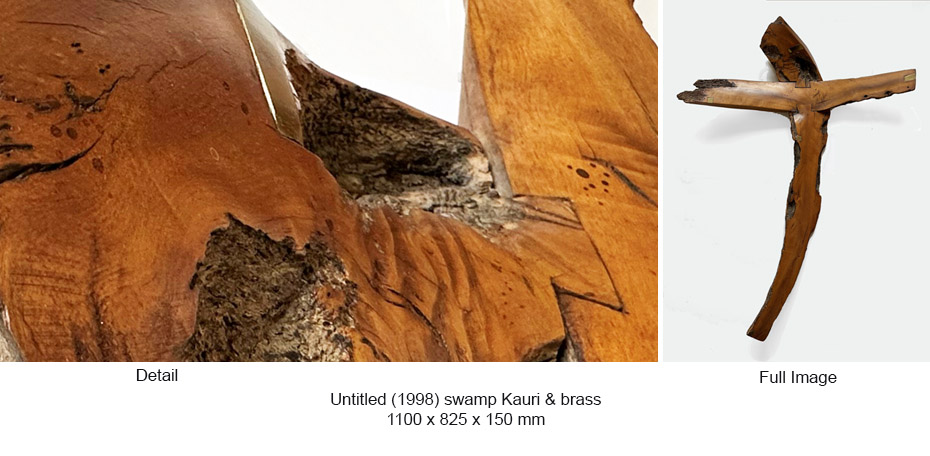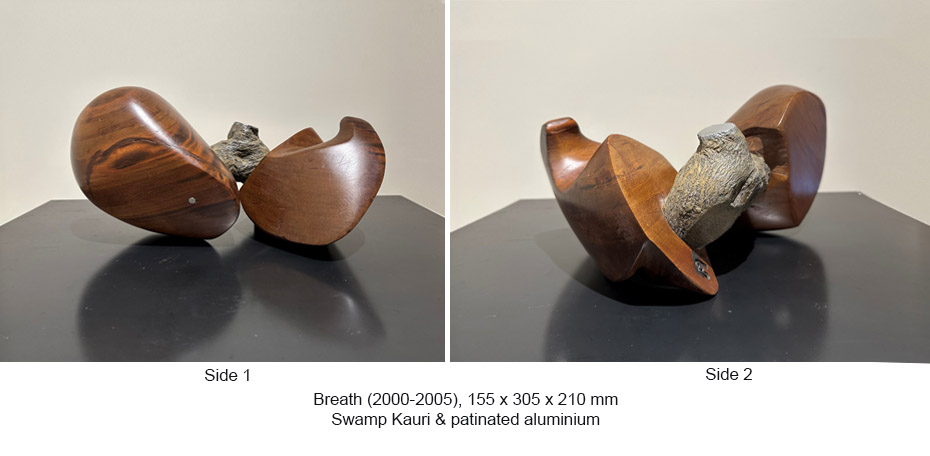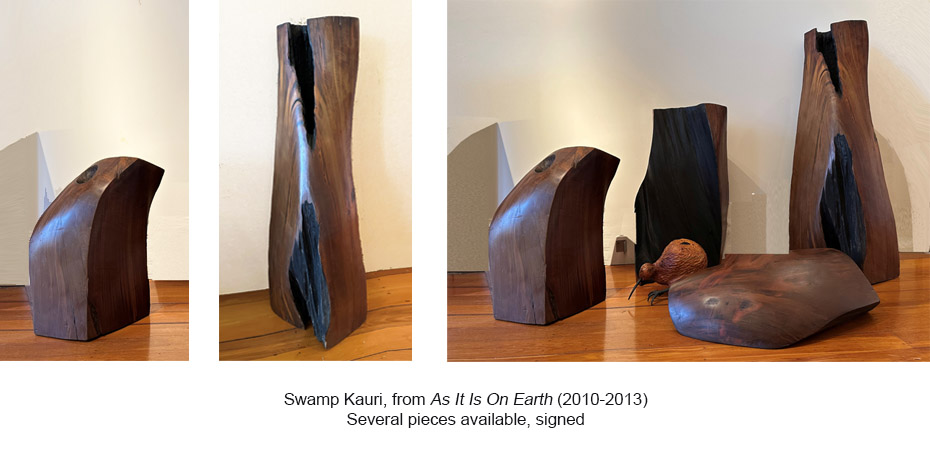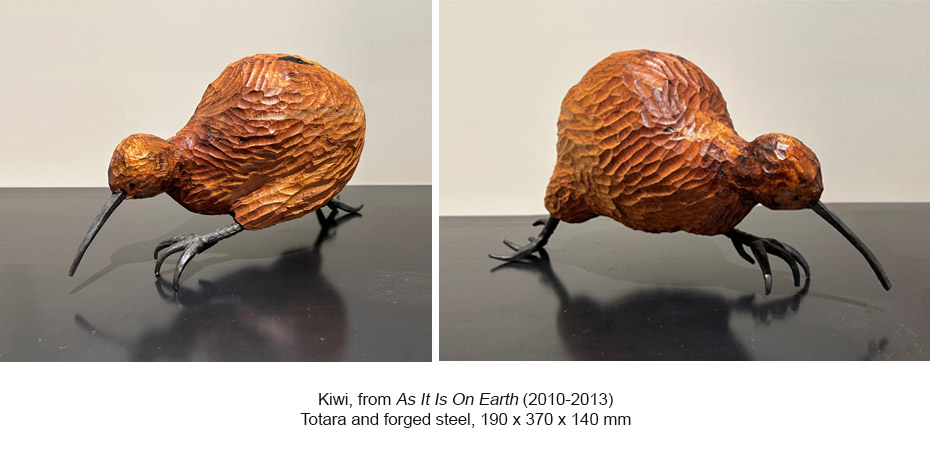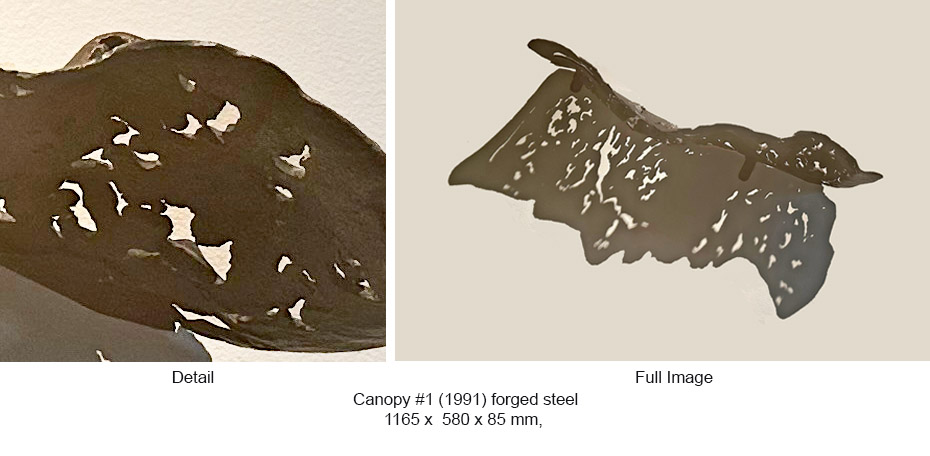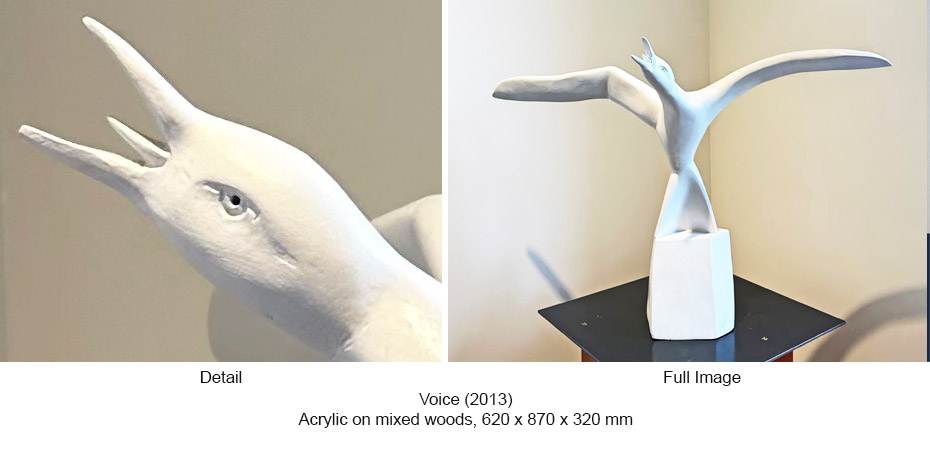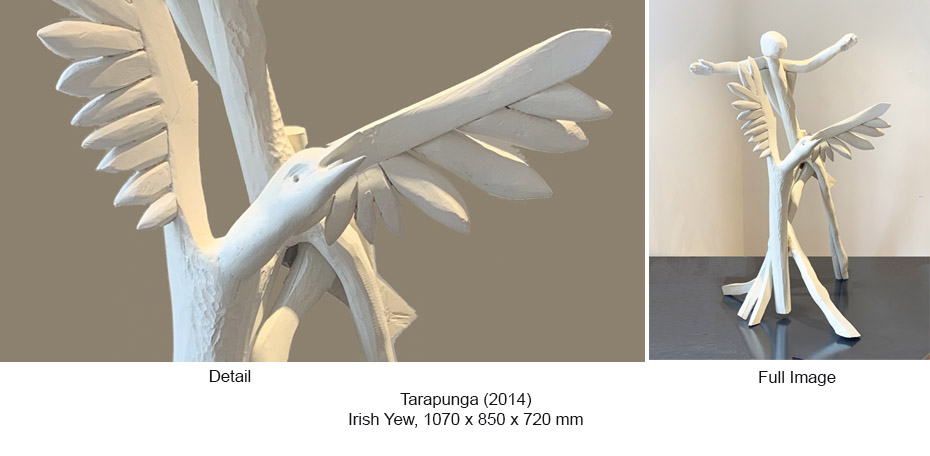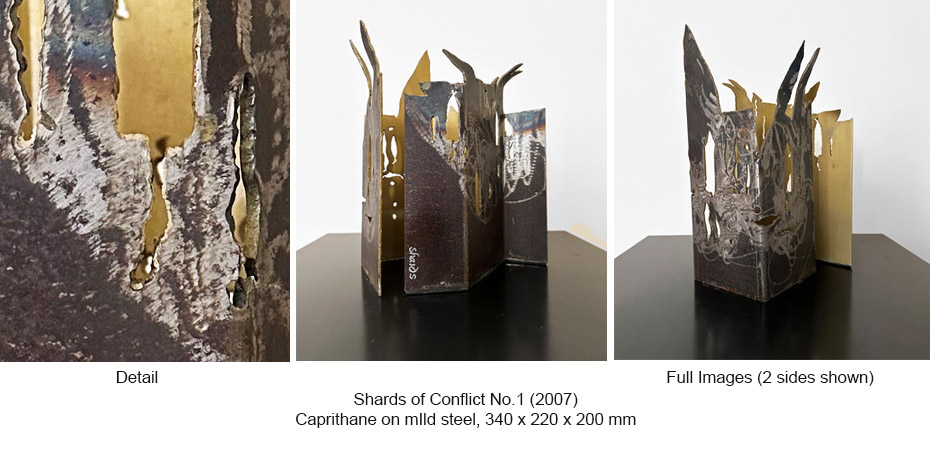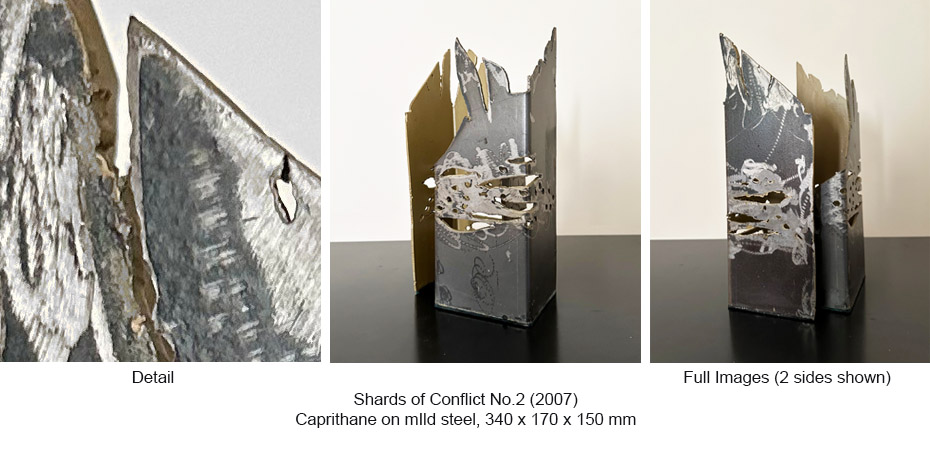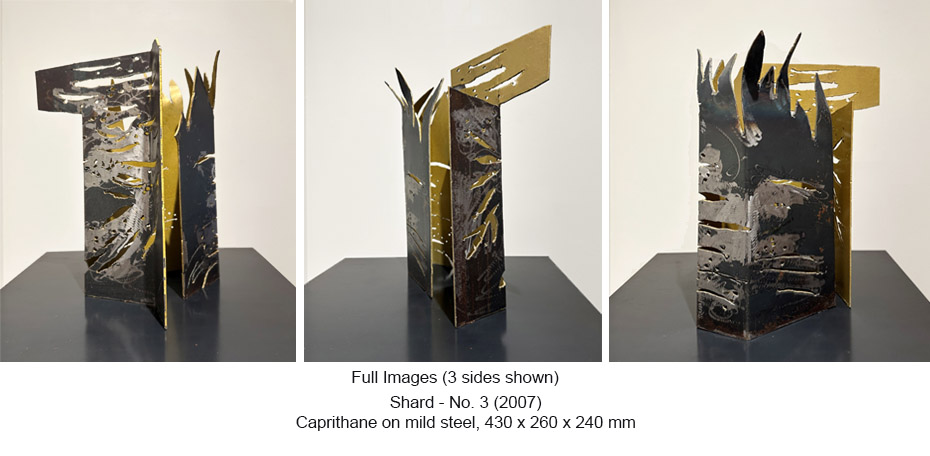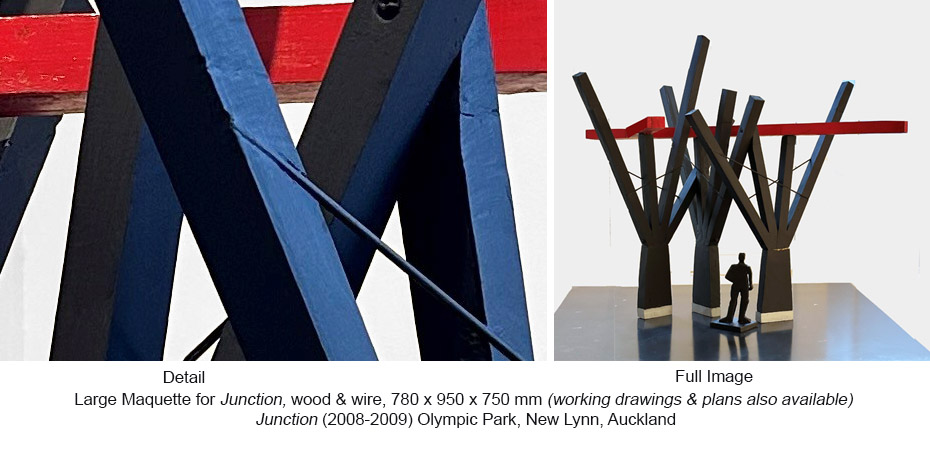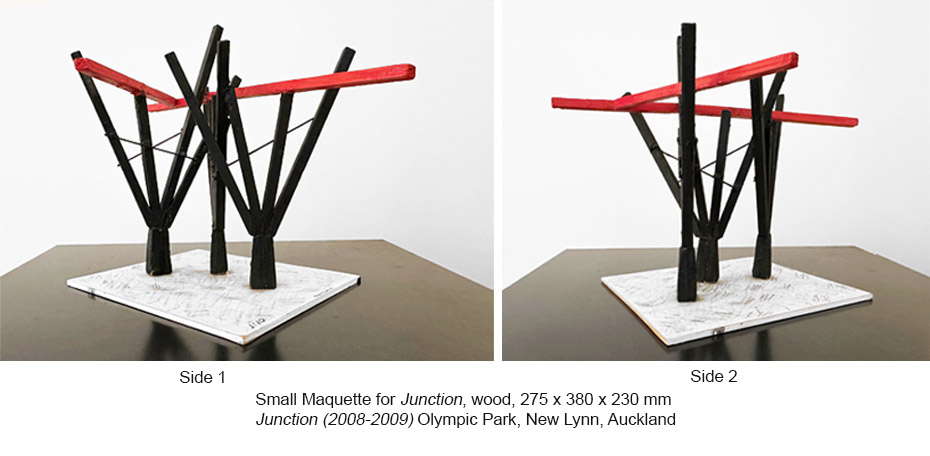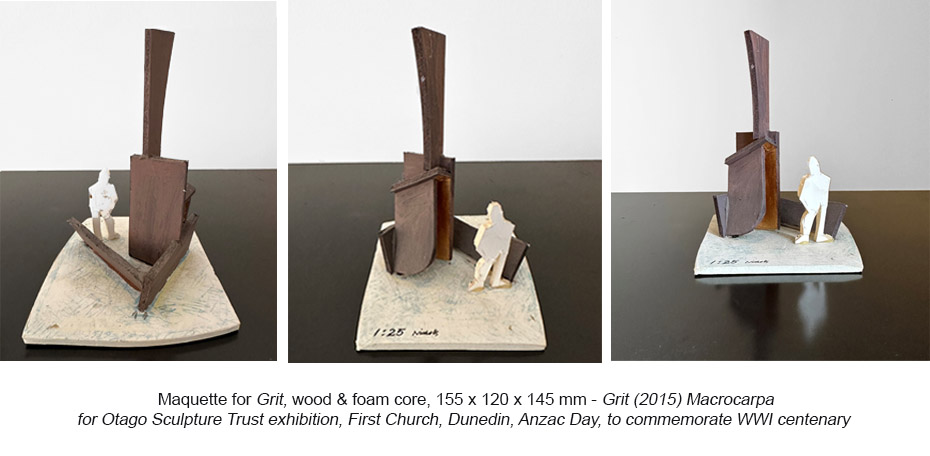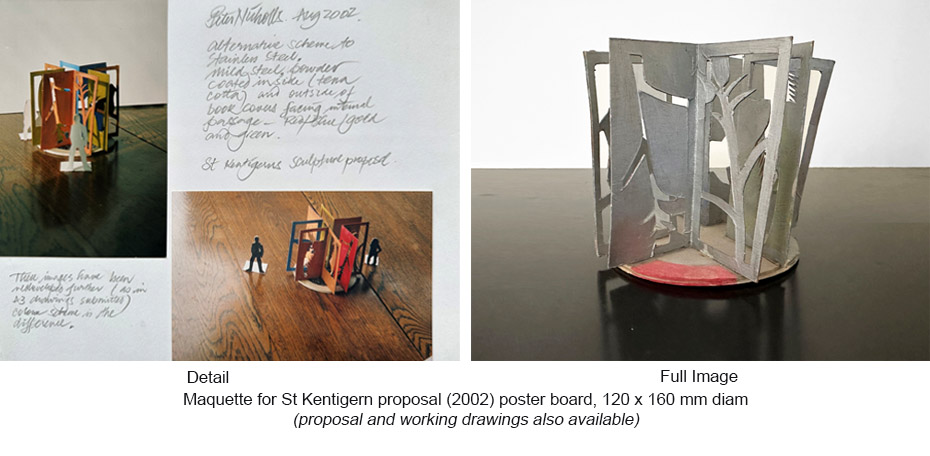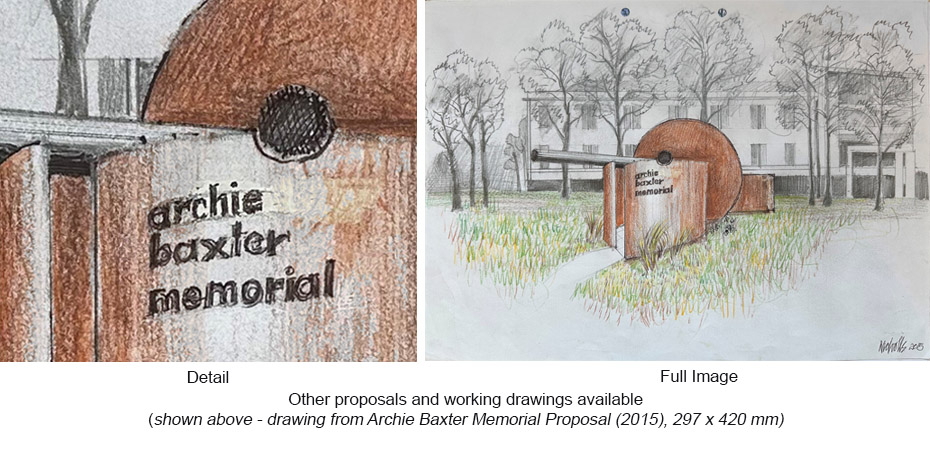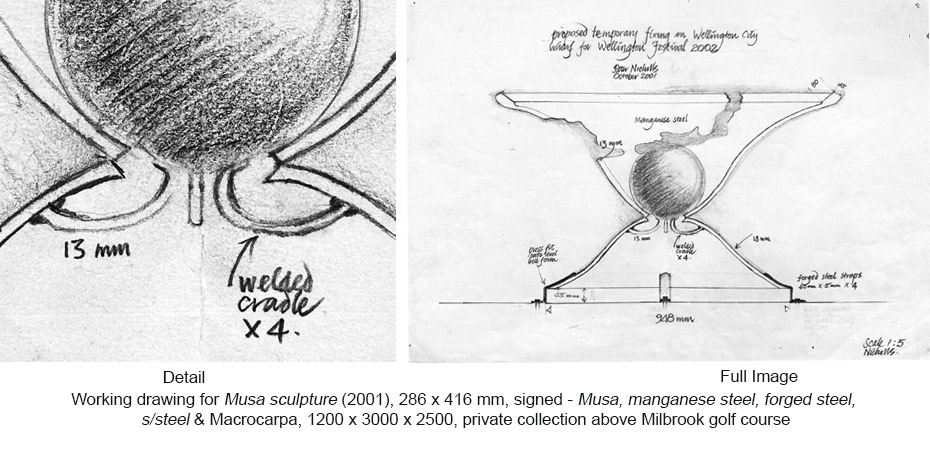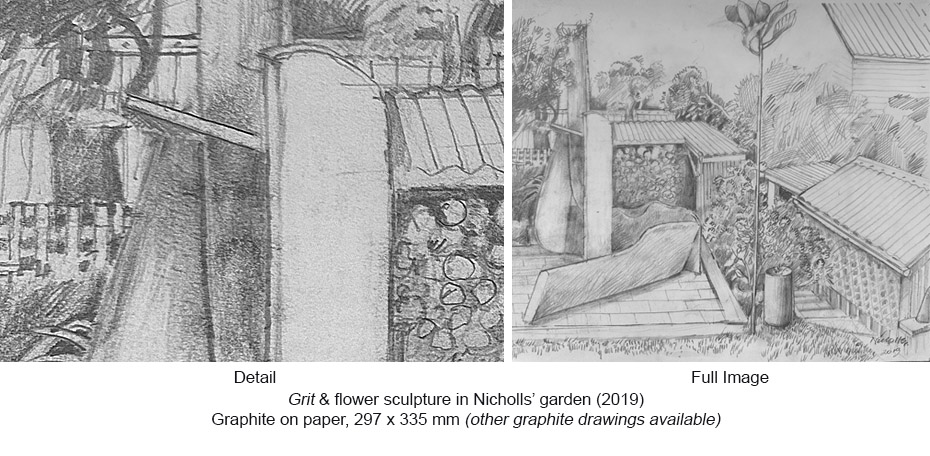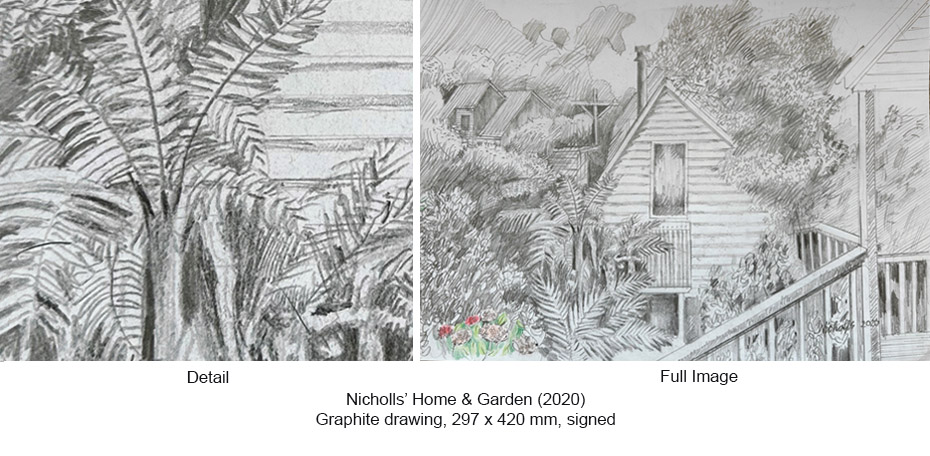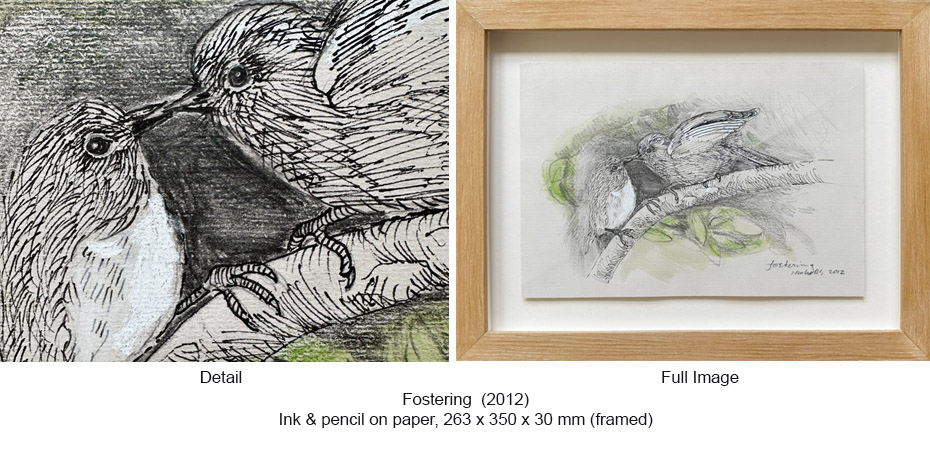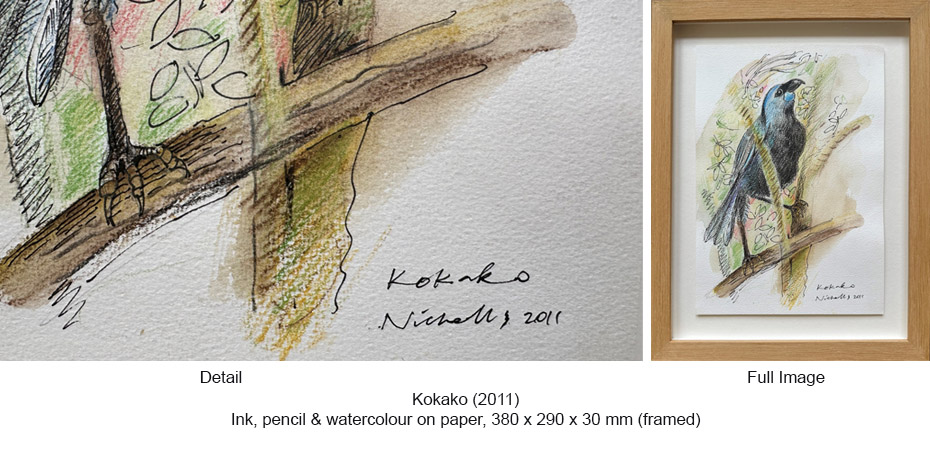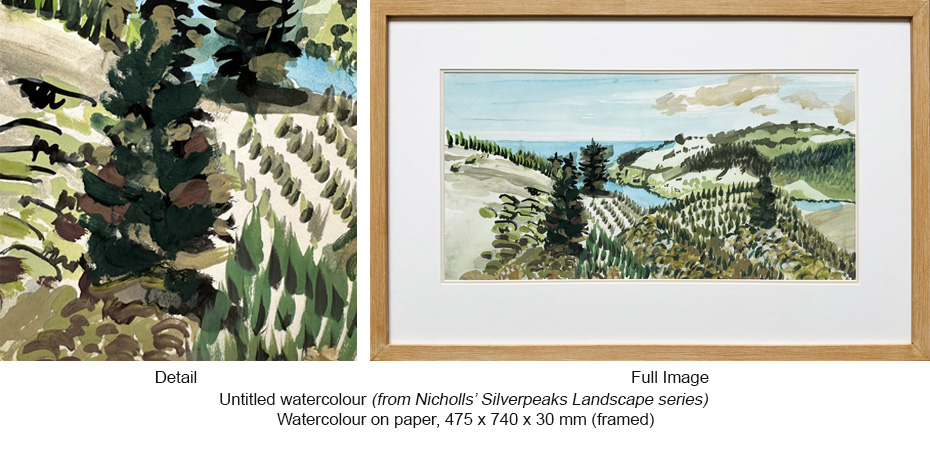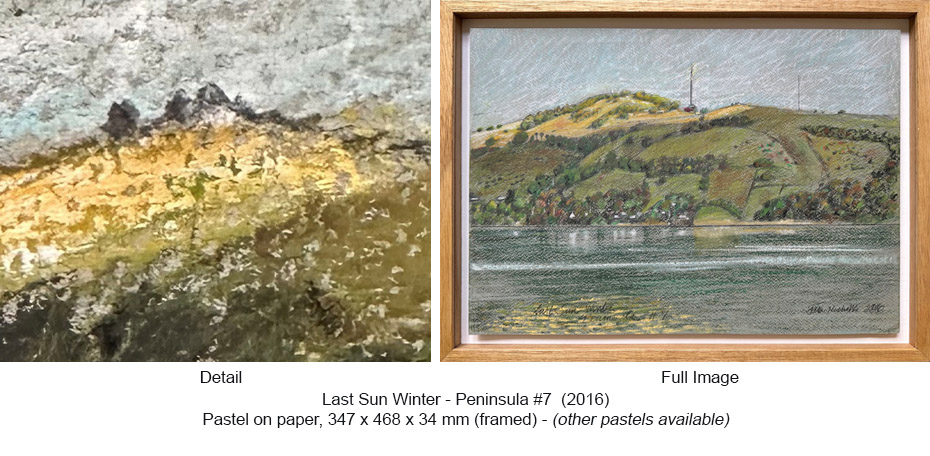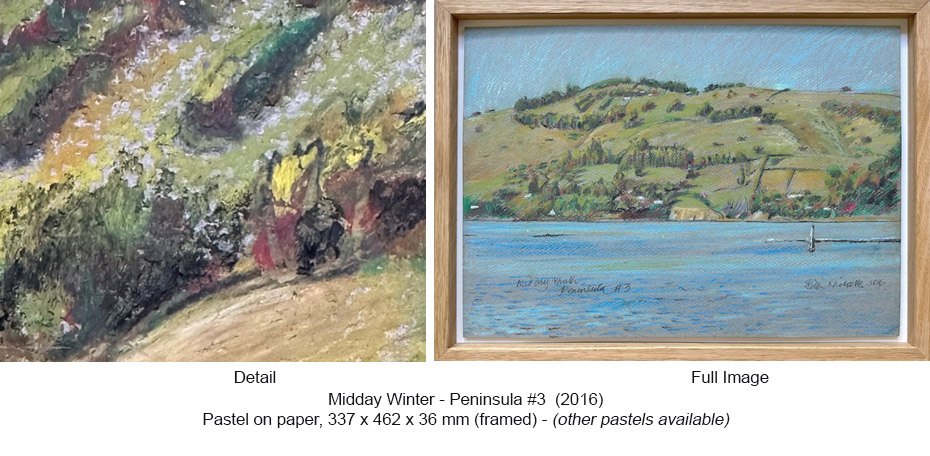Peter Nicholls was born in Whanganui in 1936. He died in Dunedin in 2021. Educated at Canterbury University of Fine Arts, Christchurch; Auckland Teachers’ College, and Elam School of Fine Arts, Auckland, he gained a Masters in Sculpture at the University of Wisconsin (Superior) USA.
Throughout his lengthy and prolific career, Nicholls actively responded to, or paralleled, internationally significant movements in sculpture. His works granted importance to New Zealand nature as well as to the land that New Zealanders inhabit. He focused his practice on New Zealand landscape and identity centering on the dynamics of sited sculpture. Nicholls’ foundational material was wood – almost always found, fallen, discarded. His works were strong, typically abstract with the titles often revealing the references. Using robust materials, sturdy construction and often demonstrating the tension of opposing forces, his works displayed a muscularity that was tempered by his sensitivity to nature.
Many of Nicholls’ works were designed for outdoor public spaces, occasionally site-specific and quite often site responsive. Some were commissioned for urban environments – Bridge (1985-86), University of Otago; Spine, Auckland Art Gallery, and Junction (2009-10), a particularly commanding work commissioned for Olympic Park, Auckland. Other works were created for rural settings – his 60m long river work Rakaia (1996-97) Gibbs Farm, Kaipara Harbour and his 90m long Tomo (2005-06), Waiheke Island. Tomo’s steam-bent and laminated members flow through a stand of kanuka in smooth parallel curves supported by heavy metal poles referencing water and the underground streams of the area, the red painted timbers a nod to the ancient Pohutukawa trees above the site.
Nicholls is a descendant of the writer and missionary Rev. Richard Taylor, who was present at the signing of the Treaty of Waitangi. A number of Nicholls’ works reflect his great-great grandfather’s journeys, His Whanganui (Sarjeant Gallery, Whanganui) portrays the narrative of journeying and exploration through undulating lengths of native Totara and Rimu, exotic willow and poplar, laid along the ground and inset with a variety of implements – a brass cross, a surveyors tape measure, a paddle, and a compass. In his travels Taylor planted cuttings and sowed seeds of imported plants, including gorse. In his Consequential Landscapes, Nicholls used a swamp kauri bowl and some 40+ ceramic gorse seeds to demonstrate the method by which gorse rapidly spread throughout the NZ landscape. His Seedings series (2001), included over 17 works using ancient swamp kauri as an indigenous signifier, alongside cast and patinated aluminium as the gorse interloper, gripping, locking, implanting, and leaping across the country.
Works in this exhibition come from various series created over the years, including some of Nicholls’ favourite pieces – Consequential Landscapes and Breath from his Seedings series (2000-2008) and a swamp Kauri cross, embedded with brass (1998) and created at an important time in his life. Nicholls kept meticulous records and retained diaries, workbooks and associated resources. This exhibition includes a number of his maquettes, sketches and working drawings, as well as a selection of other ink and graphite drawings and pastel landscapes. Copies of Don Hunter’s book Dynamics | Memory | Grace, Peter Nicholls – Sculptor, (from which a number of the quotes above were taken) will also be available.


